At 3'7'', Eddie Gaedel's baseball career was about as short as he was.
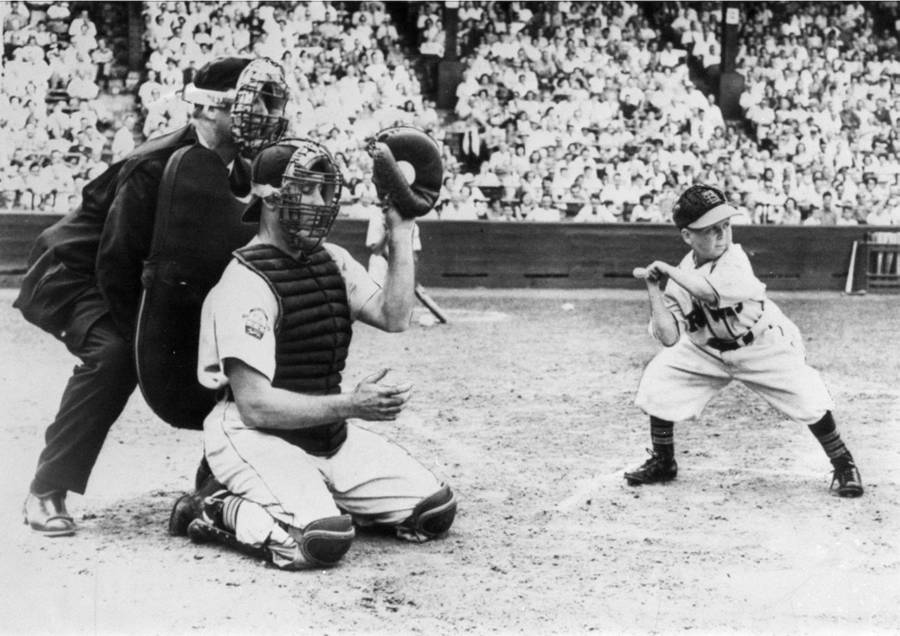
Bettmann / ContributorEddie Gaedel, a 3-foot-7 inch person, takes his famous at-bat on August 19, 1951 for Bill Veeck’s St. Louis Browns.
For a guy less than four feet tall, Eddie Gaedel made quite the splash when he made his Major League debut.
Though he only went to bat once in his life and his story doesn’t have a happy ending — his one day in a St. Louis Browns uniform went down in sports history and made fans carefully consider where the line was drawn between athletics and entertainment.
Gaedel was born in Chicago on June 8, 1925. By the time he was fully grown, he measured 3 feet 7 inches tall and weighed about 65 pounds.
Despite being teased for most of his childhood, he managed to graduate high school and find work. He performed in circuses and rodeos and crawled into plane engines and other small spaces to make repairs during World War II.
He never considered professional sports to be an option. At least not until August 1951, when he received a call from legendary baseball team owner and promoter Bill Veeck.
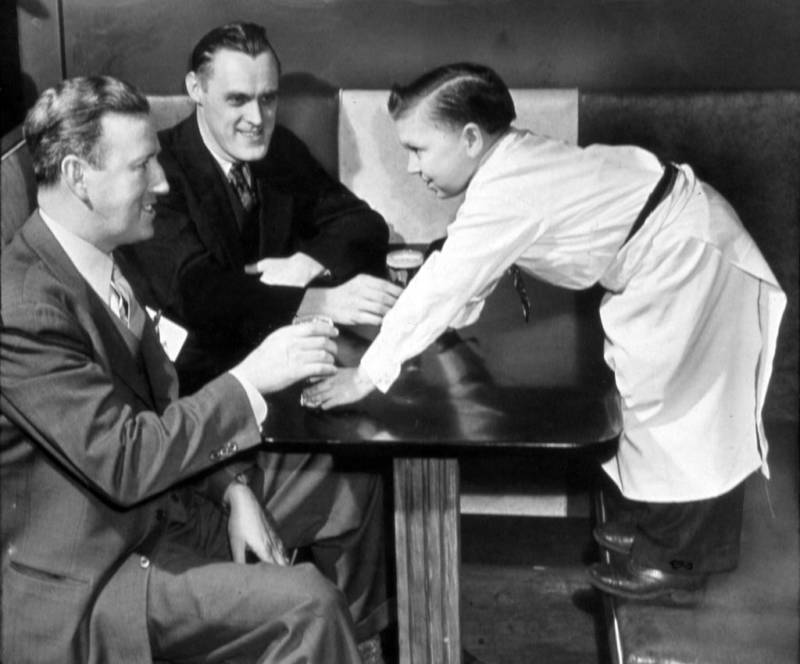
Transcendental Graphics/Getty ImagesEddie Gaedel, who batted once for Bill Veeck’s St. Louis Browns, is photographed at work in 1951 in a St. Louis, Missouri.
At the time, Veeck was the owner of the St. Louis Browns — an American League franchise that was known for ineptitude on the field and low attendance in the stands. He was planning a special celebration game in order to mark the league’s 50th birthday and he wanted something — or someone — to make it stand out.
Veeck was a well-liked sports figure already known for his dramatic flair. He was responsible for integrating the American League in 1947 when as owner of the Cleveland Indians he signed black player Larry Doby.
“One by one, [Indians manager] Lou [Boudreau] introduced me to each player,” Doby would later recall. “‘This is Joe Gordon,’ and Gordon put his hand out. ‘This is Bob Lemon,’ and Lemon put his hand out. ‘This is Jim Hegan,’ and Hegan put his hand out. All the guys put their hand out, all but three. As soon as he could, Bill Veeck got rid of those three.”
Veeck was the owner of the Indians until 1950. The next year he bought a majority stake in the Browns. Now in St. Louis, Veeck was hoping to make another major-leagues first — though for less noble and practical reasons.
He told his PR guy that he wanted a “midget.” There have been short players in the Major Leagues, but never anyone like this.
He sent his talent scout out into the world to secretly find the right guy. After settling on Gaedel, they brought him to St. Louis — wrapping him in blankets to smuggle him up to a hotel room.
They made Gaedel a uniform using the one owned by the club vice president’s nine-year-old son. He was assigned a number Veeck thought was appropriate: 1/8.
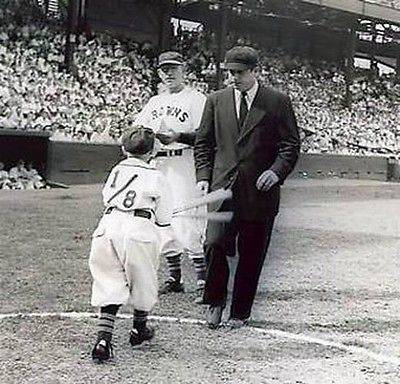
Though this may seem like a big joke considering Gaedel’s size and lack of athletic experience, there was actually some strategic merit to Veeck’s plan.
In baseball, the strike zone is the width of the home plate and the height of the distance from the midline between the player’s shoulders and waistband to just below their knee caps.
When Gaedel crouched low at the plate, that meant his strike zone was about 1.5 inches tall — making it nearly impossible for a pitcher to throw a strike to him.
Gaedel was given a $15,400 major league baseball contract and instructed not to swing. Veeck also took out a $1,000,000 life insurance policy on his newest player, worried about what would happen if Gaedel accidentally got hit by the ball.
The contract was signed over the weekend, which meant that the league wouldn’t be able to review it before the big day on Sunday, August 19, 1951.
Before the game against the Detroit Tigers, Veeck had a 7-foot-tall birthday cake rolled onto the field. Out popped a uniformed Gaedel, to the delight of the 18,000 spectators.
Still, there were murmurs that the little man didn’t quite meet the expectations Veeck had set. That is, until a few minutes later when he strolled up to the plate, ready for the first pitch.
“What the hell?” umpire Ed Hurley inquired. The Browns’ manager accommodatingly presented Gaedel’s contract. After 15 minutes of amused debating, Hurley acquiesced.
Unsurprisingly, the pitcher couldn’t hit the strike zone and Gaedel easily got his walk to first. The Browns sent in a pinch runner to take his place and the ecstatic crowd gave Gaedel a standing ovation as he jogged off the field.

Eddie Gaedel, a little person hired by St. Louis Browns owner Bill Veeck, sits on the bench in Sportsmans Park on August 18, 1951 in St. Louis, Missouri.
The American League president, Will Harridge, voided Gaedel’s contract two days later, saying the decision was in the “best interests of baseball.”
The next spring, seven little people from Hollywood showed up at Browns’ try-outs.
Despite the brevity of his moment in the spotlight, Gaedel knew how to capitalize on ten minutes of fame.
He made about $17,000 over the next two weeks from various media appearances and continued to visit ballparks over the years for promotional stunts. Eddie Gaedel was a spokesman for Buster Brown shoes, Mercury Records and the Ringling Brothers Circus.
He also maintained a relationship with Veeck. At one game, Veeck flew Gaedel and three other little people onto the field in a helicopter. They emerged dressed as aliens with ray guns, captured two infielders from the dugout, and performed a martian ceremony with them on home plate.
A couple years later, in 1961, they worked as Browns box seat vendors — since fans had complained that the normal ones blocked their views of the field.
Despite the positive things that had come from Gaedel’s unique look, he refused to travel very far for appearances. He ignored several movie cameo requests and got a job as a bartender in Chicago’s famous Midget Club. Eddie Gaedel remained sensitive about his size and became known for having a hot temper.
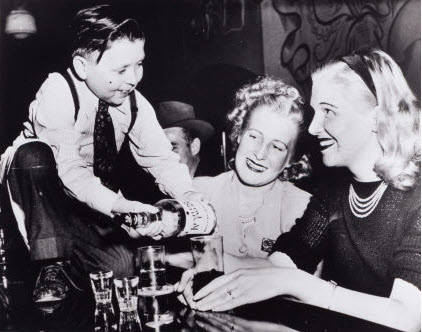
In 1961, when he was 36-years-old, he was arrested after screaming at policemen who asked why “a little boy” was out late at night.
A few weeks after that, he got in another altercation. He began yelling at strangers after a night of drinking at a bowling alley. The next morning, on June 19, his mother found him dead. Eddie Gaedel was in his bed, but covered in bruises. Doctors said he had had a heart attack as a result of a beating.
Detroit pitcher Bob Cain — who walked Gaedel that one day at the plate — was the only baseball player to attend the funeral.
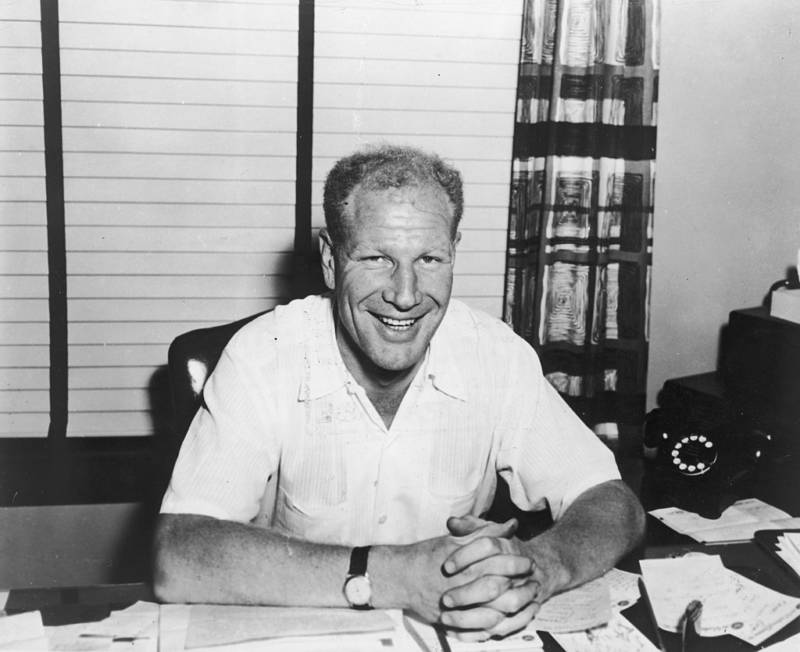
Pictorial Parade/Getty ImagesPortrait of maverick baseball executive Bill Veeck seated at his desk, 1965.
As for Veeck, he went on to own the Chicago White Sox. There, he broke the season record for home attendance with 1.4 million fans, brought the first electronic scoreboard to baseball, began the tradition of shooting fireworks after home runs, and was the first to add players’ last names to the backs of their jerseys.
Cain continued to send Eddie Gaedel’s family Christmas cards until his own death in 1997. They featured a photo of Gaedel and a caption:
“Hope your target in the future is better than mine in 1951.”
After learning about Eddie Gaedel, the shortest baseball player in history, check out these “girl baseball player” cigarette pack cards from the 1880’s. Then, check out a photo of the very first basketball game from 127 years ago.






